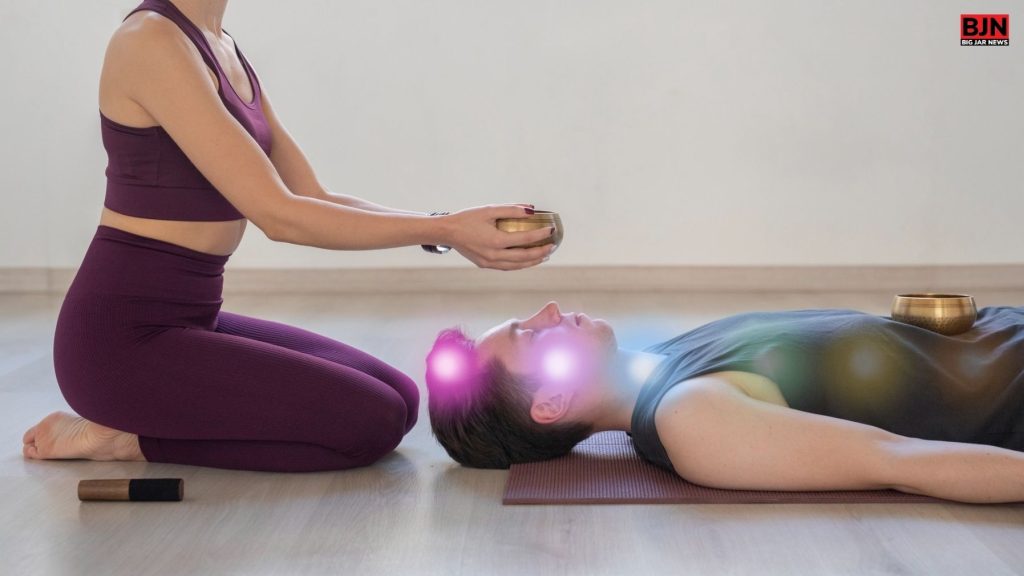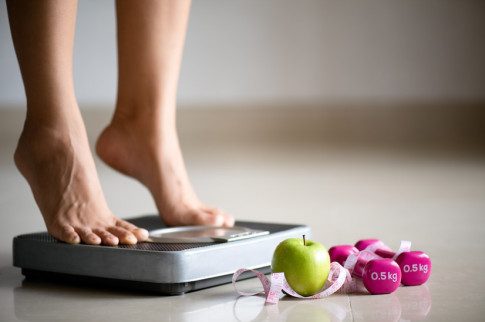Unlock Pain-Free Movement! Try These Somatic Yoga Moves for Instant Relief!

Table Of Contents
Do you often experience body stiffness as well as tension? If you need a solution Somatic yoga stands as your ideal choice.
Somatic yoga represents a different approach from normal yoga since it applies gentle and conscious body movements for tension release and muscle reeducation purposes. Somatic yoga gives your body the chance to begin again, like a fresh start.
The approach provides ideal benefits to those who either spend all day sitting or who have chronic pain and need assistance with improved movability.
Through somatic yoga practice, you can reconnect with your body as you become more flexible and achieve less stiffness without any required stretching movements.
The best part? The practice matches every individual due to its supportive nature, which allows operators at all ranges of physical ability without discrimination.
Somatic yoga offers beginners and experts a basic yet deeply powerful program to move without pain while bringing an amazing feeling to their bodies. Your body will express gratitude because of this practice. 🧘♂️💆♀️
What is Somatic Yoga?

Somatic yoga provides a mindful practice through gentle movements which helps relax muscles while improving mobility.
The yoga method involves moving slowly while keeping control of your movements which addresses the body-mind communication system to establish natural movement.
The system works perfectly for all those who need to minimize pain and remove stiffness while achieving enhanced mobility movements.
Is There Any Difference Between Somatic Yoga And Somatic Exercise?
Both somatic yoga and exercise involve physical activities. However, they differ due to their primary focus. Somatic yoga emphasises various mindful practices, internal body awareness, and gentle movements.
On the other hand, somatic exercise mainly focuses on external goals such as strength and endurance.
| Features | Somatic yoga | Somatic Exercise |
| Primary focus | Internal body awareness and mindful movement | External goals, such as strength and endurance |
| Approach | Gentle and slow movements | This often involves repetitive movements and pushing your body to extreme limits. |
| Goal | Releasing tension, increasing body awareness, and improving mind-body awareness. | Improves physical fitness, increases endurance, and builds strength. |
What Is The Core Of Somatic Yoga?

Yoga combines various postures, or Asanas, breathing exercises, or Pranayamas, and meditation, which creates a great combination of mind and body.
Meanwhile, the somatic principles combine three parts, which are introception, extroception, and proprioception.
Interoception: This depicts being aware of your body’s internal sensations, including heart rate, breathing, and pain.
Exteroception: This means you are aware of the entire temperature range, including hot and cold, the vibrations in the floor, and external factors.
Proprioception: Lastly, this helps you to be aware of your body movements, your balance, and your overall position in the space.
Things That You Must Avoid Doing During Somatic Yoga

During somatic yoga exercises, you must avoid pushing yourself too hard. Do not force any movement and ignore any pain or discomfort. Instead! You have to focus on gentle, mindful movements and better body awareness.
So, these are the things that you must avoid while practicing your somatic yoga:
Forcing Yourself or Straining. This specific yoga only emphasizes gentle and slow movements. So, do not push yourself for deep stretches and poses.
Ignoring any Kind of Pain or Discomfort. If you think any movement is causing you pain, stop it immediately and modify it if possible. If nothing is working out, then you must skip it!
Compare Yourself with Others. Somatic Yoga is all about your internal experience. So, do not compare yourself with others if you cannot achieve a certain pose or look a certain way!
Making a Rush in Practicing Movements. Just take your time and move slowly. Pay all your attention to your body sensations.
Negligence in Breathing. You must breathe consciously throughout your practice. Let your breath guide all your movements.
Not Seeking Guidance. If you have any underlying condition such as ligament injury, then you must consult with your professional before you start the somatic yoga.
Changes That You Might See After Practicing Somatic Yoga!
So, you might wonder, “How long does it take for somatic exercises to work?” Well, the best part is that for most people, it normally takes around 1-2 months to heal your body both internally and externally if you practice somatic yoga for 10 minutes every day 😍.
You may start to see the somatic yoga benefits after 7 days of practicing. Your body can start to experience improvement in major body awareness, stress reduction, and emotional regulation.
In addition, you can have better sleep, improved concentration, and a better ability to cope with stressors.
Here is a detailed look at the potential changes in your body through somatic yoga.
Physical Changes

Somatic yoga helps you connect with your body. This allows you to gain a greater understanding of your physical sensations and how you move.
Secondly, it helps reduce habitual tension patterns and alleviates any physical pain or discomfort. The gentle movements and stretches can further improve your motion and flexibility.
This way, you become more aware of your posture and develop better alignment. Lastly, somatic yoga improves your body awareness and control, leading to better balance and coordination.
Mental And Emotional Changes

Somatic yoga has also been effective for mental and emotional changes. It helps you to reduce stress and anxiety. The mindful and introspective nature can be useful to calm the nervous system and further reduce stress.
Secondly, Somatic yoga helps you become aware of your emotions and hope that you can manifest them in your body. This will allow you to manage your emotions.
Somatic yoga can be a great way to help you with your sleeping patterns if you suffer from insomnia. Moreover, it improves your focus and concentration.
However, there are certain things that you must consider, such as,
Firstly, consistency is the ultimate key. So, you must ensure that you are practicing your yoga regularly to get the most out of it!
Secondly, you must listen to your body. Always try to pay attention to body signals. Do not push yourself if you feel like your body cannot take it anymore.
Thirdly, always seek professional guidance. If you have any previous injury or physical conditions, it would be better to consult with a qualified somatic yoga instructor.
Lastly, you must be patient. Give yourself a little and maintain consistency in your practices. It may take time, but you will see some changes.
Practice These Somatic Yogas Today!

Somatic yoga as a physical discipline concentrates on both mental attention towards the body alongside deep relaxation and muscle tension release techniques.
The method contrasts with classical yoga since it executes slow movements mindfully to train your nervous system, thus enabling easier and pain-reduced movement.
Violent stress, together with painful stiffness and chronic pain can be treated with these five specific somatic yoga exercises that will help you reconnect both mentally and physically while giving you inner serenity.
Pandiculation (Full-Body Stretch & Release)
The somatic movement duplicates the natural body stretching response that occurs when people and animals awaken. The practice helps the body reset its muscles while reducing tension throughout them.
How to Practice:
- Settle your body on the floor’s surface while inhaling deeply through your lungs.
- Extend your arms above your head to maintain toes in a forward direction.
- Keep the hold for several seconds before starting muscle contraction during slow exhale.
- Relax completely and repeat 3-5 times.
Somatic Cat-Cow (Spinal Wave Release)
The Spinal Wave Release version of Cat-Cow uses fluid movement and deep spinal awareness for reducing back stiffness.
How to Practice:
- Begin this exercise from a position where your hands rest underneath your shoulders and your knees sit directly beneath your hips.
- During the inhalation reach your back up into a curved position which lifts your chest (Cow Pose).
- Release your breath as you round your spine while tucking your chin in position (Cat Pose).
- Position your body for slow movements while you maintain feel for each vertebra and perform 1-2 minutes of stretches.
Pelvic Clock (Hip & Lower Back Release)
Through this exercise users gain greater mobility in their hips and attain lower back tension release and improved core understanding.
How to Practice:
- Place your body on the floor with bent knees, keeping your feet strongly against the floor.
- Visualize a pelvis clock positioned like the numbers of a common clock with 12 at the naval a six at the sacrum.
- Perform a series of pelvis rotations first forward (towards 12), then backward (towards 6).
- Perform side movements that start at position 9 and then progress to position 3, followed by circular movements in each direction.
- Maintain a controlled and slow pace for 1-2 minutes during this exercise.
Shoulder Unwind (Neck & Shoulder Release)
The stretch works well in relieving shoulder stiffness alongside upper back tension, which benefits people who spend many hours sitting down.
How to Practice:
- You should position your body to sit comfortably with your limbs resting at your sides.
- The right shoulder deserves an inhalation as you perform the forward roll followed by a backward sweep. Stretch your shoulder down towards the floor.
- Release air through your mouth as you bring the left shoulder through its circular motion.
- Perform circular shoulder movements while moving the shoulders together or alternating shoulder movements.
- Complete the movement for 1 to 2 minutes with smooth and flowing motions.
Somatic Side Bend (Lateral Body Expansion)
Performing this exercise stretches the ribcage while simultaneously helping release body tension along the sides and increasing breathing power.
How to Practice:
- Position yourself either standing upright or seated with your arms hanging at your sides.
- Breathe in while elevating your right arm in the overhead direction.
- Exhale gradually while bending the body to the left with fluid and controlled motions.
- Perform this position for several inhalations before returning to the midpoint.
- The exercise should be performed on each side of the body for 1 to 2 minutes.
Wrapping It Up!
Somatic yoga is a wonderful practice that aims to restore balance, release tension, and enhance mobility without pushing the body into rigid poses.
The simple yet powerful movements involved in somatic yoga have the potential to positively impact the way you feel in your body.
By beginning to incorporate somatic yoga into your routine, you can experience profound relaxation and a revitalized sense of energy.
Read Also:
You May Also Like

September 28, 2022
























